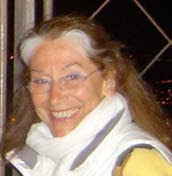 by Madeleine Kando
by Madeleine Kando
For the past two months I have been glued to my TV set for most of every evening. I have become addicted to a genre called ‘Nordic Noir’, which takes its name from the literature genre of Scandinavian crime fiction. It has gained traction in the United States and Britain with the famous trilogy ‘Girl with a Dragon Tattoo’.
If you suffer from a short attention span, if you don’t like crime stories to divert into complex character analysis which only on the surface have nothing to do with the crime itself, you won’t like these movies. Nordic Noir movies move at a snail’s pace. In ‘The Killing’ for instance (‘Forbrydelsen’ in Danish), one single murder of a teenage girl spans the entire 20 episodes. Even the BBC’s excellently produced 1990’s ‘Prime Suspect’ (whose main character is played brilliantly by Helen Mirren), doesn’t come close to taking that long to get to the punch line.
These stories are not just your simple ‘whodunits’. They have a heavy component of social criticism which makes them all the more interesting. According to the excellent website: Nordic Noir, the origins of the genre can be traced back to the assassination of the Swedish Prime Minister Olof Palme in 1986. Back then the investigation was so badly handled that there was a huge surge in interest in crime fiction in Sweden. The loss of faith in the authorities and a realization that Sweden wasn’t the safe, model society that people thought it was, that it had crime, corruption and all the other ills of a more capitalist society, like the United States all contributed to the popularity of the genre.
Another important component of Swedish Crime fiction, is the Nazi connection. This is complicated because, even though Sweden was neutral in World War 2, there is a murkiness about Sweden’s relation to the Nazis. They were politically neutral and didn’t have to contribute to the fighting while still conducted business with Nazi Germany and profiting from the war. So, were they neutral or were they collaborators? In Stieg Larsson’s ‘the Girl with Dragon Tattoo’, the Nazi theme is the basis of the story.
Nordic Noir movies are cramped with details, sub-stories that side-step into each character’s personal life, without ever moving so far away from the main story that the suspense of who did it is kept alive in each episode. They are structured like a piece of Swiss cheese. There are holes purposely put into the fabric of the story, so that seemingly unrelated characters, after having floated in and out of existence like bubbles in a cauldron, slowly come together to form a coherent whole. The stories are so cleverly designed that you marvel at the genius of the whole thing. The complexity only gets resolved at the very end, and all the characters seem to get together into a complex knitting pattern, just like the now famous Faroes sweater that the lead detective wears throughout ‘The Killing’.
This is a far cry from the fast-paced, action-packed, shoot em up type of crime drama, where you expect to have at least one juicy corpse every hour or so. The mood is dark, the shots of the city are pretty much always at night and many of the characters don heavy wool sweaters, just to make sure you know its cold and unpleasant, whatever they are doing. The two detectives in charge of the case in ‘The Killing’, are hostile to each other, there is none of the sexual attraction that you find in the X-files between the female and male detectives, but they still manage to co-operate: they both want to catch the bad guy.
What I like the most about these movies is that they all portray women in power. In the Girl with the Dragon Tattoo, a small, anti-social female with a history of severe abuse is wreaking havoc amongst criminals by her pure wit and, although seemingly indifferent and cold, she has a heightened sense of justice.
In ‘the Bridge’, another masterpiece of the Nordic Noir genre, Sofia Helin as Saga Norén, the lead homicide detective is a semi-autistic, unbelievably sexy, blonde who reminds me of a young Catherine Deneuve. She goes out to find a sex-partner as if she was shopping for groceries. You might think that her behavior mimics that of a man, but she is very much a female character, just not quite as socially conditioned as you would expect. She is so obsessed with solving the crime at hand, that she almost gets killed in the process.
Both in ‘The Bridge’ and ‘The Killing’, the female lead undergoes a transformation: In ‘The Bridge’, Saga Norén becomes more ‘human’, in ‘The Killing’, Sarah Lund (Sofie Gråbøl) slowly falls apart by nearly destroying her family relationships, her career and her sanity because of her obsession with the case. Talking about intense.
Watching these murder mysteries in a foreign language adds to the suspense. I am sure for a slow reader, having to spend precious viewing time on written text might be a disadvantage, but there is something to be said about absorbing the mood of a language purely by the way it sounds rather than what the words mean. It is like tasting sugar for the first time. You are open to its novelty. But that might just be me.
The actors are not your typical handsome, Hollywood type, toothpaste stars. Some of them have crooked teeth, asymmetrical faces, their skin is not perfect, but the acting is superb. The shots are often in extreme close-up, showing maybe just one eye, or the corner of a mouth. This technique leaves a lot to the viewer’s imagination, which is closer to the experience you get when you read the story rather than watch it. But don’t take my word for it. Give it a try, you won’t be sorry. leave comment here
Youtube
Contact Form
Popular Posts
-
By Madeleine Kando Flying is like signing away your rights as a human being. Not only is your life put on hold, but you never know which sid...
-
By Tom Kando Only one thing aggravates me more than the mistakes of the electorate - as exemplified by the Democratic loss in Massachusett...
-
by Madeleine Kando We left Boston early Sunday morning, the day before the 2024 Solar Eclipse. We have friends who live close to the Canadia...
-
Tom Kando Some societies are more successful than others. Today, there are successful societies such as Australia, Canada and Scandinavia,...
Tom's Publications and Essays
Madeleine's Publications and Essays
interesting links
Publish Your Article!
A valid author name is required. We will create live links to url's that you specify in your post. Please be patient, and allow us some time to read and approve your article.We reserve the right to refuse any articles that are not deemed appropriate for this blog.
Blog Archive
-
▼
2012
(95)
-
▼
September
(11)
- Nordic Noir: A Recipe for Addiction
- Crime and Punishment: Who is Nuttier, Norway or Ca...
- Is America Responsible for the World?
- For no Rhyme or Reason
- Lance Armstrong: They all Cheated. Does that Make ...
- 9/11: The Time for Pacifism has not yet Arrived
- The American Way
- Why Obama is Infinitely Preferable to Romney
- What's Hollywood in French?
- Roman Holiday: The Good, the Bad and the Ugly
- How Clint Eastwood Didn't Make My Day
-
▼
September
(11)








